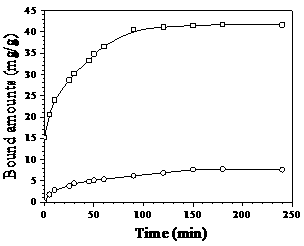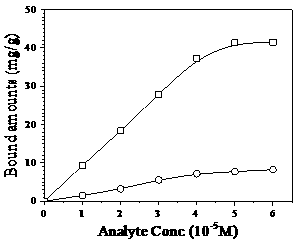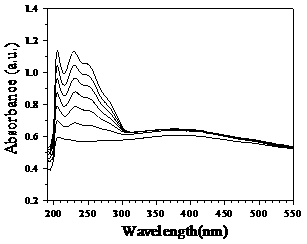Preparation method of Fe3O4@PEG@SiO2 artificial antibody for detecting thifensulfuron methyl
An artificial antibody, thifensulfuron-methyl technology, applied in the field of materials science, can solve the problems of high reaction temperature and non-selectivity
- Summary
- Abstract
- Description
- Claims
- Application Information
AI Technical Summary
Problems solved by technology
Method used
Image
Examples
preparation example Construction
[0033] A kind of Fe that detects thifensulfuron-methyl 3 o 4 @PEG @SiO 2 The preparation method of artificial antibody, comprises in Fc 3 o 4 Surface modification of magnetic nanoparticles Polyethylene glycol 2000 (Polyethylene glycol 2000, PEG 2000), whose surface is coated with nano-SiO 2 Shell layer, forming a core-shell-shell structure, characterized in that: the elution in the artificial antibody is located at the SiO 2 Imprinted molecules in the shell, SiO 2 The interior of the shell forms a cavity structure complementary to the structure, size and functional groups of the imprinted molecule, and the artificial antibody that elutes the imprinted molecule has a specific recognition site for the target analyte molecule, achieving selective recognition of the target analyte molecule and detection, the artificial antibody preparation process includes the following three steps:
[0034] 1.1 The first step is the surface modification of polyethylene glycol 2000 water-sol...
Embodiment
[0037] Example: Using molecular imprinting technology and nano-synthesis technology to prepare Fe for detection of thifensulfuron-methyl 3 o 4 @PEG @SiO 2 Artificial antibodies, using three-step reaction to obtain the above-mentioned artificial antibodies:
[0038] 1.1 The first step is the surface modification of polyethylene glycol 2000 water-soluble magnetic nanoparticles Fe 3 o 4 Preparation: Accurately weigh 2.7030 g FeCl with an electronic balance with an accuracy of 1 / 10,000 3 ·6H 2 O and 1.9880 g FeCl 2 4H 2 O was placed in a 250 mL three-neck flask, and under a nitrogen atmosphere, 50 mL of -1 Add polyethylene glycol water 2000 solution into the above flask, heat it in a water bath to 50°C, add ammonia water at 1000 rpm, adjust the pH value of the solution to 11, react for 35 min, and magnetize Fe 3 o 4 The nanoparticles were separated from the solvent, and the Fe was washed by centrifugation with deionized water.3 o 4 Nanoparticles, Washed Fe 3 o 4 Nanopa...
PUM
 Login to View More
Login to View More Abstract
Description
Claims
Application Information
 Login to View More
Login to View More - R&D
- Intellectual Property
- Life Sciences
- Materials
- Tech Scout
- Unparalleled Data Quality
- Higher Quality Content
- 60% Fewer Hallucinations
Browse by: Latest US Patents, China's latest patents, Technical Efficacy Thesaurus, Application Domain, Technology Topic, Popular Technical Reports.
© 2025 PatSnap. All rights reserved.Legal|Privacy policy|Modern Slavery Act Transparency Statement|Sitemap|About US| Contact US: help@patsnap.com



